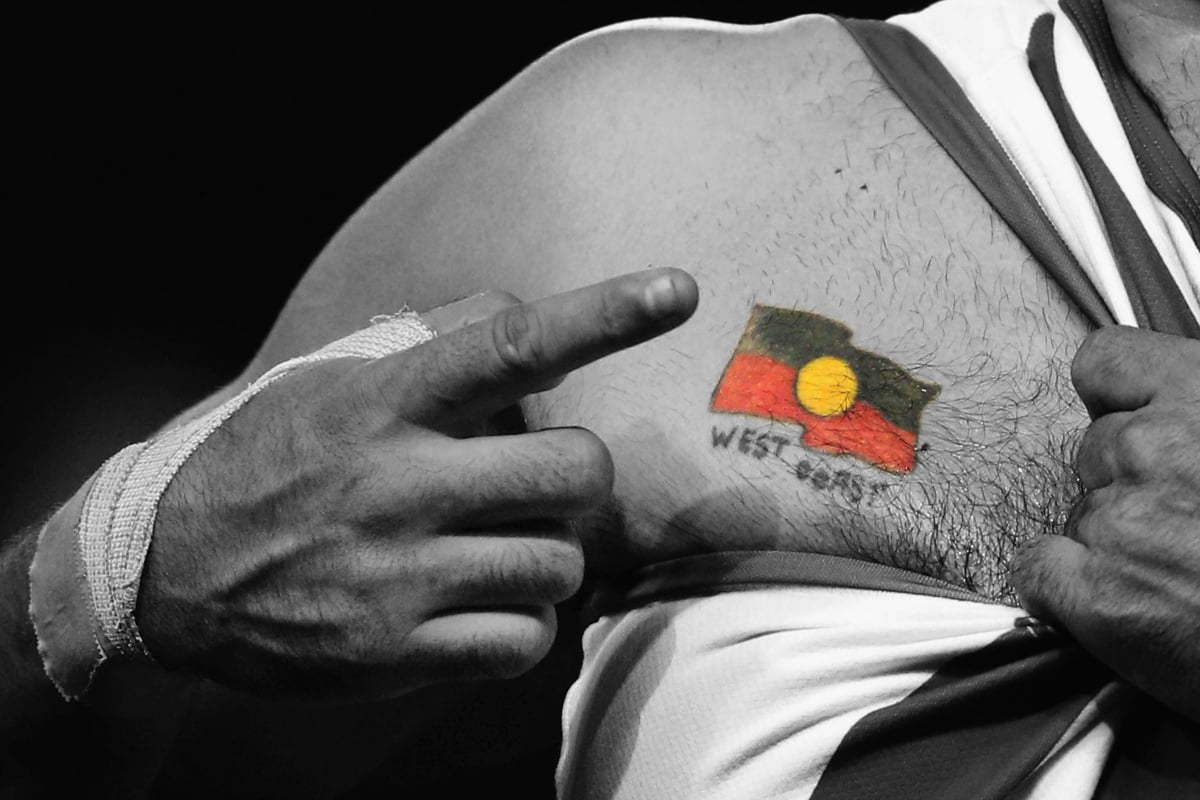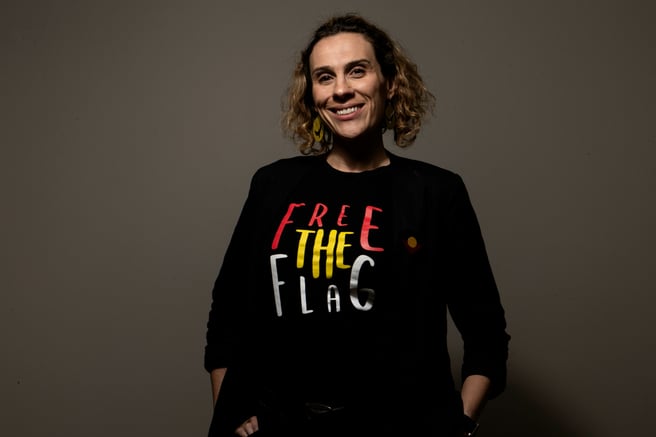
This weekend, the AFL will stage its annual Sir Doug Nicholls Round, named in honour of the Yorta Yorta man who remains one of the game's most legendary athletes.
The round celebrates Indigenous players and culture, yet there won't be an Aboriginal flag taking pride of place in the centre of the oval, nor will there be any emblazoned on the players' specially designed jerseys.
Why?
Because the league hasn't paid a copyright fee.
Watch: Amanda Fotheringham on the awkward questions she gets asked as an Aboriginal woman.
The man behind the Aboriginal flag.
The Aboriginal flag was designed in 1971 by Harold Thomas, an artist and Luritja man from the Northern Territory.
It's an image steeped in symbolism: black on the top to represent First Nations people; red on the bottom, to represent the earth; and a yellow circle for the sun, the giver of life.
The design was first flown for National Aboriginal Day in Adelaide in 1971. But it gained national visibility the following year when it was used at the Aboriginal Tent Embassy, a permanent Indigenous rights protest site established outside Parliament House in Canberra.
More than two decades later, on July 14, 1995, the Governor-General issued a proclamation that declared the design to be the official flag of the Aboriginal people of Australia.


Top Comments